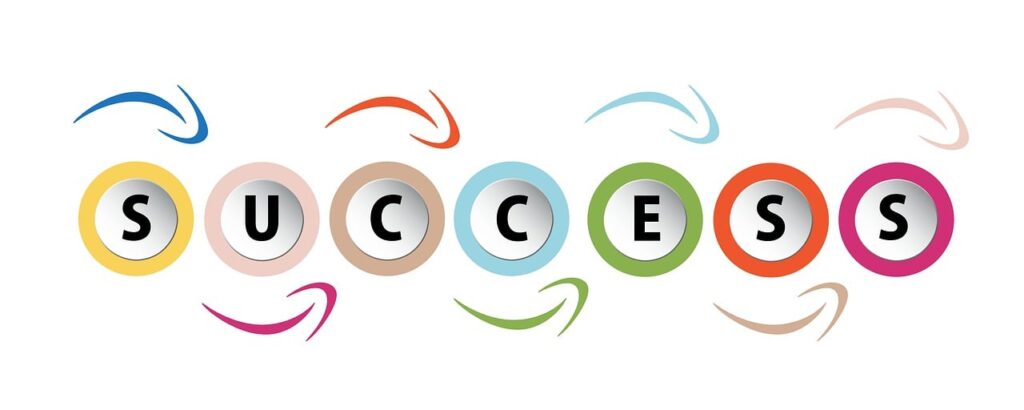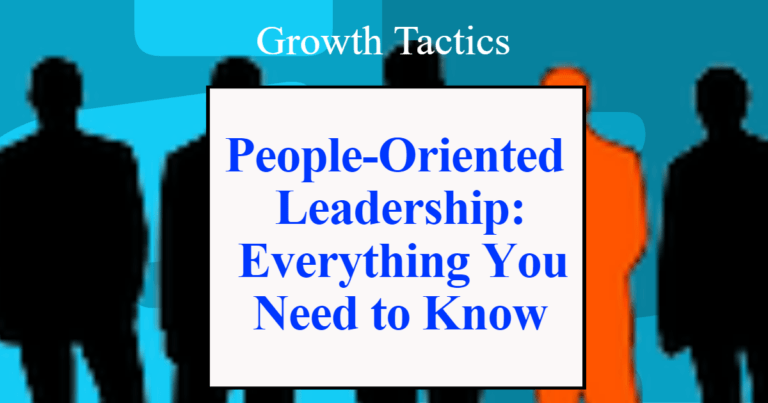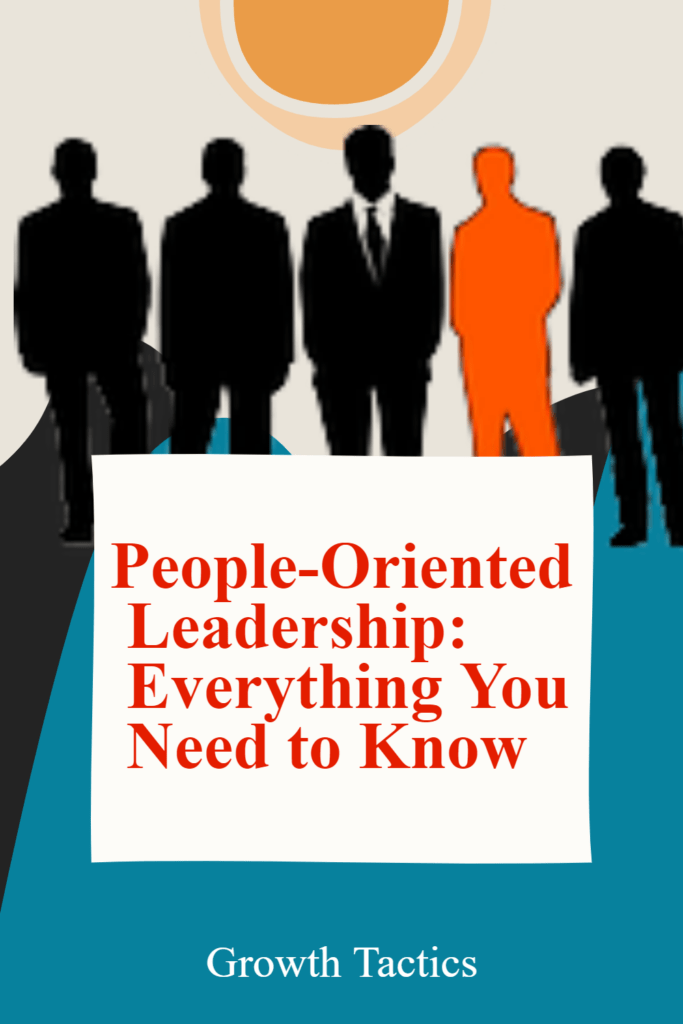People-oriented leadership is a style of management that focuses on supporting, developing, and empowering team members. This type of leader prioritizes the well-being and needs of employees over the tasks.
In contrast, task-oriented leaders concentrate predominantly on getting work done and achieving goals. Their main priority is completing tasks on time.
People-oriented leaders aim to facilitate employee growth. They believe that each team member brings value through their unique talents, perspectives, and experiences. This leadership style revolves around building trust, fostering collaboration, and maintaining strong relationships.
The core philosophy behind people-oriented leadership is that happy, engaged employees are more likely to be productive, and loyal, and deliver higher-quality work. By creating a positive and supportive work environment, leaders enable their teams to thrive.
Jump To Section
Characteristics of a People-Oriented Leader

A people-oriented leadership style focuses on building relationships, maintaining team morale, and facilitating collaboration. These leaders tend to have excellent interpersonal skills and prioritize open communication within their teams.
Some key characteristics of people-oriented leaders include:
- Focuses on relationships and team morale – A people-oriented leader cares about the well-being and job satisfaction of team members. They take the time to get to know employees on a personal level and cultivate trust. This leader is concerned with fostering positive team dynamics.
- Democratic/participative decision-making – Rather than handing down directives, a people-oriented leader involves team members in key decisions, weighs their input, and builds consensus. This creates a sense of ownership and engagement.
- Open communication and feedback – People-oriented leaders maintain open doors and channels. They actively listen, invite discussion, and give timely feedback. This facilitates transparency and helps prevent misunderstandings.
By developing genuine connections with employees and promoting collaboration, people-oriented leaders aim to unlock their team’s full potential. They lead through inspiration rather than authority.
The Importance of Understanding Your Team
A people-oriented leader takes the time to get to know each team member as an individual. They make an effort to understand everyone’s unique strengths, weaknesses, working styles, and motivations. This allows them to play to people’s strengths when delegating work. It also helps them provide personalized feedback, coaching, and development opportunities.
Building personal connections and trust is a key priority for people-oriented leaders. They schedule regular one-on-one meetings to check in with employees. This gives team members a chance to share concerns, ask for advice, or just talk about their lives outside of work. The leader demonstrates active listening skills during these conversations. They ask thoughtful questions and share empathy. Over time, these meaningful interactions allow the leader to gain a deeper understanding of what makes each person tick.
Getting to know your people on a personal level takes time and effort. But it pays off through stronger working relationships built on mutual understanding and trust. Team members feel comfortable bringing their whole, authentic selves to work when they know their leader truly cares.
Encouraging Employee Development
People-oriented leaders focus on developing their employees by providing coaching, mentoring, and growth opportunities. They make employee development a priority through regular check-ins and discussions about career goals.
Providing Coaching and Mentoring
People-oriented leaders take on a coaching role to help team members strengthen their skills and reach their potential. They provide guidance, share knowledge and experience, give constructive feedback, and serve as a sounding board for solving problems. Mentoring helps employees gain confidence and motivates them to advance in their careers.
Giving Growth Opportunities
Growth opportunities allow employees to build new skills and take on greater responsibilities. People-oriented leaders empower team members by delegating tasks that stretch their abilities. They provide access to training and educational resources. Leaders support employees’ efforts to get promoted or make lateral moves in the organization.
Conducting Regular Development Discussions
Frequent career development discussions are essential. People-oriented leaders check in regularly on employees’ goals and progress. They collaborate on development plans tailored to each person’s strengths and interests. Leaders give actionable advice for developing skills needed for advancement. Ongoing development conversations reinforce the company’s commitment to nurturing talent.
Fostering Collaboration Between Team Members

People-oriented leaders understand the importance of collaboration and teamwork. They actively encourage cooperation between team members and strive to break down silos that can hamper productivity.
Here are some tips for fostering collaboration as a people-oriented leader:
- Host team-building activities to help employees get to know each other better. When team members build relationships and trust, they will be more willing to help each other meet goals.
- Create opportunities for cross-departmental collaboration. Employees can gain new perspectives and ideas when they work with colleagues in different roles.
- Define team goals that require input from multiple departments. This encourages employees to come together to find solutions.
- Design workspaces that facilitate casual interactions. Open office layouts and shared common spaces promote relationship building.
- Reward collaborative successes. Recognize teams that join forces to drive progress and innovation.
- Model collaborative behavior yourself. Demonstrate how you build relationships with colleagues and ask for input.
The most effective leaders break down the barriers between team members that can impede collaboration. They create a culture of cooperation that allows employees to learn from each other and collectively achieve more.
Promoting Work-Life Balance
A key principle of people-oriented leadership is promoting work-life balance for employees. This involves taking steps to avoid employee burnout and respect personal time outside of work.
People-oriented leaders recognize that employees have lives and responsibilities outside of their jobs. As such, they aim to provide flexibility where possible through options like:
- Flexible scheduling to accommodate things like doctor appointments or picking up kids from school
- Occasional remote work days to avoid long commutes
- Generous vacation time and support for taking time off
People-oriented leaders check in regularly with team members to monitor workloads and watch for signs of burnout. If someone seems overwhelmed, they will take steps to lighten the load by shifting tasks or bringing in additional help.
Respecting personal time is also critical. People-oriented leaders don’t expect employees to be available 24/7 to answer calls or emails during evenings, weekends, or vacations. They set clear boundaries and make sure staff don’t feel pressured to overwork.
By promoting work-life balance in these ways, people-oriented leaders help prevent employee burnout. This results in higher engagement, productivity, and retention.
Creating an Engaging Company Culture
An engaging company culture doesn’t happen by accident – it takes thoughtful planning and intentional action by people-oriented leaders. Here are some ways leaders can foster an engaging culture:
Fun team events and activities – People-oriented leaders make time for team bonding through events like office parties, team lunches, volunteering activities, and recreational outings. These events give employees a chance to interact in a relaxed setting and get to know each other on a more personal level. Leaders who participate show they value spending time together as a team.
Employee recognition programs – Publicly recognizing employees for their hard work and achievements is a key way leaders can boost engagement. Employee of the Month awards, peer-to-peer recognition, and shoutouts in company meetings are simple ways to celebrate wins. When employees feel genuinely appreciated, they’re more invested in contributing.
Open and collaborative workspaces – The physical office layout impacts how people interact. An open floor plan with common spaces encourages collaboration. Leaders can also designate areas for informal gatherings and meetings to spark creativity. A comfortable, inviting workspace reflects a people-first culture.
Communicating Openly and Transparently
People-oriented leaders understand the importance of open communication. They make an effort to provide context and clearly explain the reasoning behind decisions. Leaders solicit feedback and practice active listening to ensure team members feel heard. When mistakes happen, people-oriented leaders own up to them. They don’t shy away from admitting when they’re wrong.
This transparent communication style creates an environment of trust. Employees feel comfortable sharing ideas and concerns when the leadership is approachable. They know their voices matter.
People-oriented leaders hold regular one-on-one meetings with team members. This provides a forum for giving feedback and answering questions. Scheduling recurring meetings shows that the leader prioritizes communication. It’s an opportunity to provide coaching and recognize achievements.
Open and honest communication requires vulnerability from leaders. Admitting uncertainty or lack of knowledge can feel risky. However, it models humility for employees. When leaders remove the expectation of perfection, it creates psychological safety on teams. No one is afraid to speak up about challenges or failures.
Ultimately, transparent communication enables people-oriented leaders to tap into the collective intelligence of their team. They gather different perspectives to make informed decisions. And they build a workplace of mutual understanding and respect.
Pros and Cons of the People-Oriented Approach
People-oriented leadership, characterized by its emphasis on the well-being, development, and satisfaction of team members, has gained traction in various organizational contexts. This leadership approach fosters strong, collaborative relationships, ensuring that team members feel valued and supported. However, like any leadership style, it comes with its set of advantages and challenges.
Pros
Enhanced Team Morale and Job Satisfaction: One of the most significant advantages of people-oriented leadership is its positive impact on team morale and job satisfaction. When leaders focus on their team members’ well-being and development, it creates a supportive work environment. Employees feel valued and respected, which, in turn, increases their motivation and loyalty to the organization.
Increased Creativity and Collaboration: People-oriented leaders encourage open communication and collaboration, creating a conducive environment for innovation. When team members feel safe to express their ideas and opinions, it leads to diverse perspectives and solutions, driving creativity and innovation within the team.
High Employee Retention Rates: The supportive nature of people-oriented leadership contributes to high employee retention rates. By investing in employees’ growth and ensuring their satisfaction, leaders can reduce turnover, saving the organization the time and cost associated with recruiting and training new employees.
Cons
Potential for Reduced Urgency in Task Completion: A heavy emphasis on employee satisfaction and well-being might sometimes lead to a lax attitude towards deadlines and task urgency. Team members might prioritize interpersonal relationships and personal development over timely project delivery, affecting organizational productivity.
Challenges in Decision-Making: People-oriented leaders strive for consensus and are often highly democratic in their decision-making process. While this inclusive approach has its advantages, it can also lead to delays and difficulties in making tough decisions, especially in situations that require swift and authoritative action.
Risk of Favoritism: Leaders who are exceptionally people-oriented may unintentionally display favoritism towards certain team members whom they connect with more personally. This perception of favoritism can lead to resentment and division within the team, undermining the very camaraderie the leadership style seeks to foster.
In conclusion, while people-oriented leadership offers numerous benefits such as improved team morale and creative collaboration, leaders must be aware of its potential drawbacks. The key to effective leadership lies in finding the right balance—supporting and valuing team members while ensuring that organizational goals and deadlines are met. As the workplace continues to evolve, adaptability in leadership styles remains crucial to address the changing dynamics and challenges effectively.
Task-Oriented Leadership vs People-Oriented Leadership
While both styles are essential in various organizational contexts, they differ significantly in focus and application.
Task-oriented leadership primarily centers on the operational aspects of management. Leaders who adopt this style prioritize the completion of specific tasks and set clear objectives for their teams. The emphasis is on efficiency, organization, and achieving measurable results. Such leaders are highly systematic and expect a high level of productivity from their team. This approach is particularly effective in environments where tasks require precise attention and adherence to deadlines, such as in manufacturing or project management sectors.
In contrast, people-oriented leadership focuses more on the interaction with and the well-being of team members. Leaders endorsing this style invest time and resources in building team cohesion, encouraging professional development, and ensuring employee satisfaction. They are viewed as mentors or coaches who support individual growth and foster a collaborative, inclusive work environment. This leadership style is particularly beneficial in creative industries or roles where innovation thrives on collaborative dynamics.
Both leadership styles have their merits and limitations. Task-oriented leaders may excel in crunch situations where quick, decisive action is needed, but might struggle in situations where team morale is low. On the other hand, people-oriented leaders excel in creating a positive work atmosphere and high employee retention rates but might face challenges in situations requiring stringent control and discipline.
Successful leaders often integrate aspects of both leadership styles, adapting to the needs of their team and the demands of their organizational environment to foster both productivity and a positive workplace culture. Whether leaning more towards task orientation or people orientation, the best leaders understand the importance of balancing task achievement with team welfare.
Conclusion
People-oriented leadership is critical in today’s work environment. This leadership style focuses on developing positive relationships, fostering collaboration, promoting work-life balance, and creating an engaging culture. The benefits of adopting a people-first approach are immense.
Key takeaways include:
- People-oriented leaders prioritize understanding their team members’ needs and goals. Taking the time to get to know employees as individuals leads to higher engagement and job satisfaction.
- This leadership style emphasizes ongoing training, mentoring, and career development opportunities. Helping team members acquire new skills makes them more empowered and invested in their work.
- Fostering collaboration and open communication creates a transparent and trusting environment. Employees feel comfortable sharing ideas and concerns without fear.
- Flexibility with scheduling and remote work arrangements demonstrate a commitment to work-life balance. This reduces stress and burnout.
- People-oriented leaders focus on creating a positive culture centered around shared values. This leads to higher retention rates.
- The benefits of people-oriented leadership include increased productivity, innovation, and loyalty. It also improves recruitment and reduces turnover.
This type of supportive leadership builds trust between leaders and team members. In today’s workplace, adopting a people-first mindset is key to leading effectively and humanizing the work experience. More companies should invest in developing people-oriented leaders.


